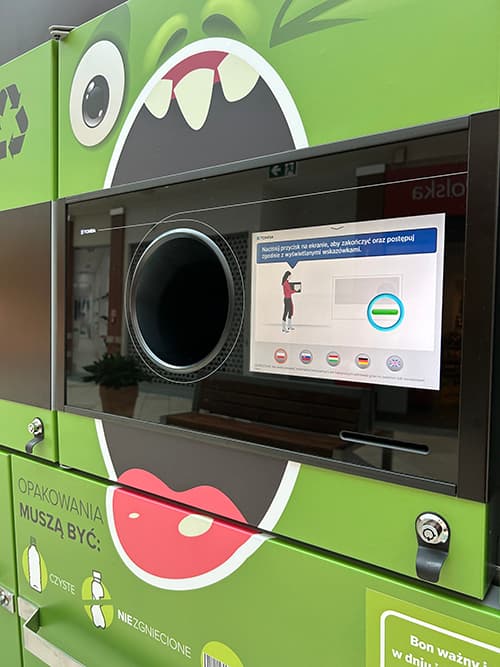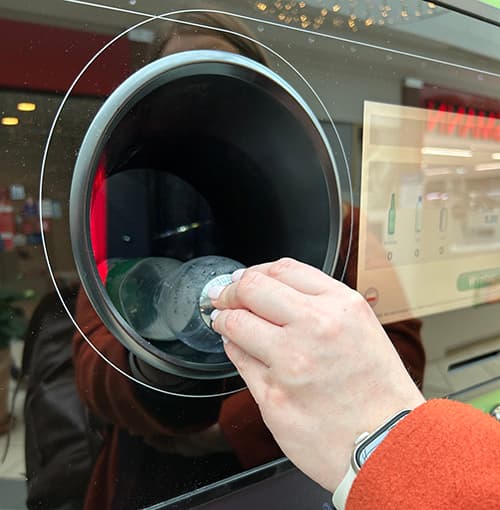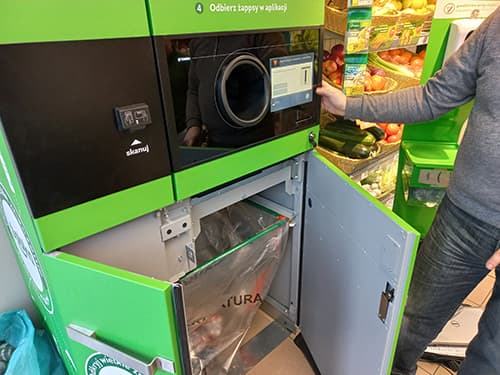Government of Poland publishes deposit return system law
A bill to introduce a deposit return system (DRS) on beverage containers was published by the Government of Poland on September 12, 2023. The legislation mandates deposits on single-use plastic bottles of up to 3 liters, reusable glass bottles of up to 1.5 liters and metal cans of up to 1 liter, and will begin January 1, 2025.
The collection, sorting, and recycling of packaging materials is an essential part of the circular economy, enabling raw materials like plastic, metal and glass to be used over multiple lifecycles. DRSs are proven to maximize resource efficiency and reduce litter polluting the environment. Many European countries, like Norway and Lithuania, with DRS, have achieved very high collection rates for beverage packaging, which is then recycled.
“Today, less than 50 percent of beverage containers in Poland are collected and recycled. The effects of this can be seen as litter in our streets, in our forests and along our beaches. Landfills are overflowing. This will change with the introduction of a deposit return system,” says Anna Sapota, Vice President of Public Affairs for Eastern Europe North at TOMRA.
“We are pleased that government representatives, industry, and consumers have recognized the benefits of this solution. Assuming a 90% collection level on beverage packaging, which we can achieve in Poland through the deposit return system, the nation can recover more than 12 billion beverage containers for recycling every year.”

Next steps and required preparation
In due course, operators of the deposit system, who are responsible for the development, set up, and management of the required collection and processing infrastructure will be appointed. One or more specialized companies will carry out the registration and obtain all the necessary permits and licenses to guarantee the beverage packaging collection activities. Once this is achieved, the next step is to register packaging manufacturers, retailers as official collection points, and products covered by the deposit system, which in the future will carry a distinct deposit marking enabling consumers and retailers to recognize eligible products covered by the deposit system.
Agreements between the participants in the system are required as well. These agreements will define the relationships between producers and the operator(s), the operator(s) and commercial units, and between the operator(s) themselves. Another key element is the creation and implementation of IT systems to support the processes of settling deposits and handling fees, and the reporting of containers collected.
In the meantime, retailers that have committed to joining the system should prepare the appropriate infrastructure to handle the return of packaging - for both automated and manual collection. Automated collection of used beverage containers via reverse vending machines (RVMs) in European deposit systems have the largest share of the total number of containers collected for recycling. “Smaller retailers with lower return volumes will accept the eligible containers manually via small collection bins or bags, requiring minimal investment. Larger retailers may choose to purchase equipment tailored to their specific needs and space capabilities. Depending on the reverse vending system selected, the machines can collect between 1,000 to 3,000 containers per hour,” says Konrad Robak, Country Manager at TOMRA Collection Poland.
Implementing a DRS requires the involvement of producers, retailers, service providers, recyclers and regulators. Creating a state-of-the-art and modern DRS also depends on cooperation, collection of bins or bags, and effective organization. Some retailers in Poland participated in pilot programs before the government's decision to introduce DRS. Ample time for preparation is beneficial for businesses, logistics, and public image. Participating retailers gain valuable information about the scale of investment, back-office capabilities and consumer behavior. “Consumers in Poland have become enthusiastic about collecting and returning used beverage containers. Our RVMs alone have collected more than 10 million containers between January and June 2023 – that is the best proof,” adds Robak.

“Deposit return systems achieve the desired results very quickly, be it an increase of collection and subsequent recycling rates, a stable supply of high-quality food grade secondary raw materials, or litter reduction. For instance, within two years after the introduction of the DRS in Lithuania, the nation increased the collection rate for PET bottles from below 33% to 92%. In practice, it may take two to three years after the official launch for a DRS to mature – it is a period during which processes and aspects within the system's operations are finetuned.” commented Sapota.
The first year after introducing DRS is a time of learning, adaptation, and adjusting to the new rules. Retailers, collection and processing points will adjust their infrastructure to effectively handle the used beverage containers returned to the system. It is also a time when consumers begin to fully understand the system, create new habits and make returning beverage containers part of daily life. As the DRS becomes more routine and gains public acceptance, it is during the second and third years after the system’s launch that further optimizations can be envisaged for logistics and material processing.



